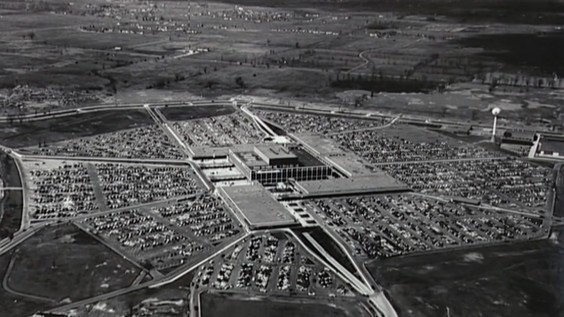Shopping malls, which thrived in the late 20th century as millions of families decamped from the cities to the suburbs, are struggling to survive.
About one-third of the nation’s 1,200 enclosed shopping malls are dead or dying, Ellen Dunham-Jones, an architect and professor at Georgia Tech, told The Atlantic. A dead mall is considered to one that has a high occupancy rate, has dwindling consumer traffic, or is dated or deteriorating.
There’s now a website, deadmalls.com, that identifies malls in every state that the website’s creators say are dead or dying.
They include one-time retail meccas like Northland Center in suburban Detroit. Located in Southfield, Mich., on Detroit’s northwest border, it was the largest shopping center in the world when it opened in 1954.
The mall marked the first major retail development outside the Motor City, and some say it hastened the demise of retailing downtown. Northland, which was open air until 1974, featured 1.4 million square feet of shopping space and more than 8,000 parking spots.
But Northland, largely deserted, will close in April after falling into receivership.
Experts cite a variety of reasons for the decline of malls. Large chain stores that anchor many of these malls, such as Sears, Kmart and J.C. Penney, are struggling. Many shoppers are opting for the convenience of detached big-box stores such as Target and Kohl’s.
Some retail analysts say there are just too many stores (and online shopping sites) vying for consumers’ dollars. And Mark Hinshaw, a Seattle architect, urban planner and author, told the New York Times that malls just aren’t cool anymore.
I have no doubt some malls will survive, but major segments of our society have gotten sick of them.
As the Times reported, experts have been predicting the death of shopping malls for decades.
Premature obituaries for the shopping mall have been appearing since the late 1990s, but the reality today is more nuanced, reflecting broader trends remaking the American economy. With income inequality continuing to widen, high-end malls are thriving, even as stolid retail chains like Sears, Kmart and J. C. Penney falter, taking the middle- and working-class malls they anchored with them.
Malls also appear to be the victims of changing demographic trends. A new study from the University of Virginia’s Weldon Cooper Center for Public Service found that inner-ring suburbs, where most of the older malls are located, are becoming poorer.
Most cities in the United States in 1990 had a “donut” shape, with wealthier residents in a booming suburban ring surrounding a decaying core. Today cities are increasingly resembling what has been called a new donut – with three, rather than two rings. The center has grown much more desirable to educated, higher-income residents, especially young adults under the age of 35. Poverty, meanwhile, is migrating outwards, creating an “inner ring” of urban and early suburban neighborhoods around the core, where per capita incomes have fallen and education rates are stagnant. Beyond the inner ring, an outer ring of newer and larger suburbs continues to add population.
Large, deteriorating malls present huge redevelopment challenges for communities. Some have found new uses, such as medical centers, community colleges, schools and churches, The Atlantic reported. Dunham-Jones said there are 211 malls across the country being retrofitted for new uses.
That’s the thing about repurposing malls: Because they were built with so much space, they’re often a good option for industries looking to expand. When the city government of Voorhees, New Jersey, near Philadelphia, outgrew its city hall, for example, it moved to the struggling Echelon Mall, which had lost two anchors, Sears and JC Penney, in the 90s. Now, the Pennsylvania Real Estate Investment Trust is investing millions to build residential units and offices on the property.
But other malls have become abandoned ruin porn or have been torn down. Demolition appears likely for the abandoned Summit Place Place Mall–Michigan’s first enclosed mall–located near the struggling city of Pontiac. The 1.4 million-square-foot mall was condemned as unsafe by Waterford Township officials in January. It closed in 2009.
It’s been more than 60 years since suburban malls began to replace stores in urban centers as the preferred shopping choices for consumers. That’s a long time, so it shouldn’t be surprising that malls are being challenged by new retail and demographic trends.
Download our free guide to covering business on 17 beats.
STORY IDEAS











